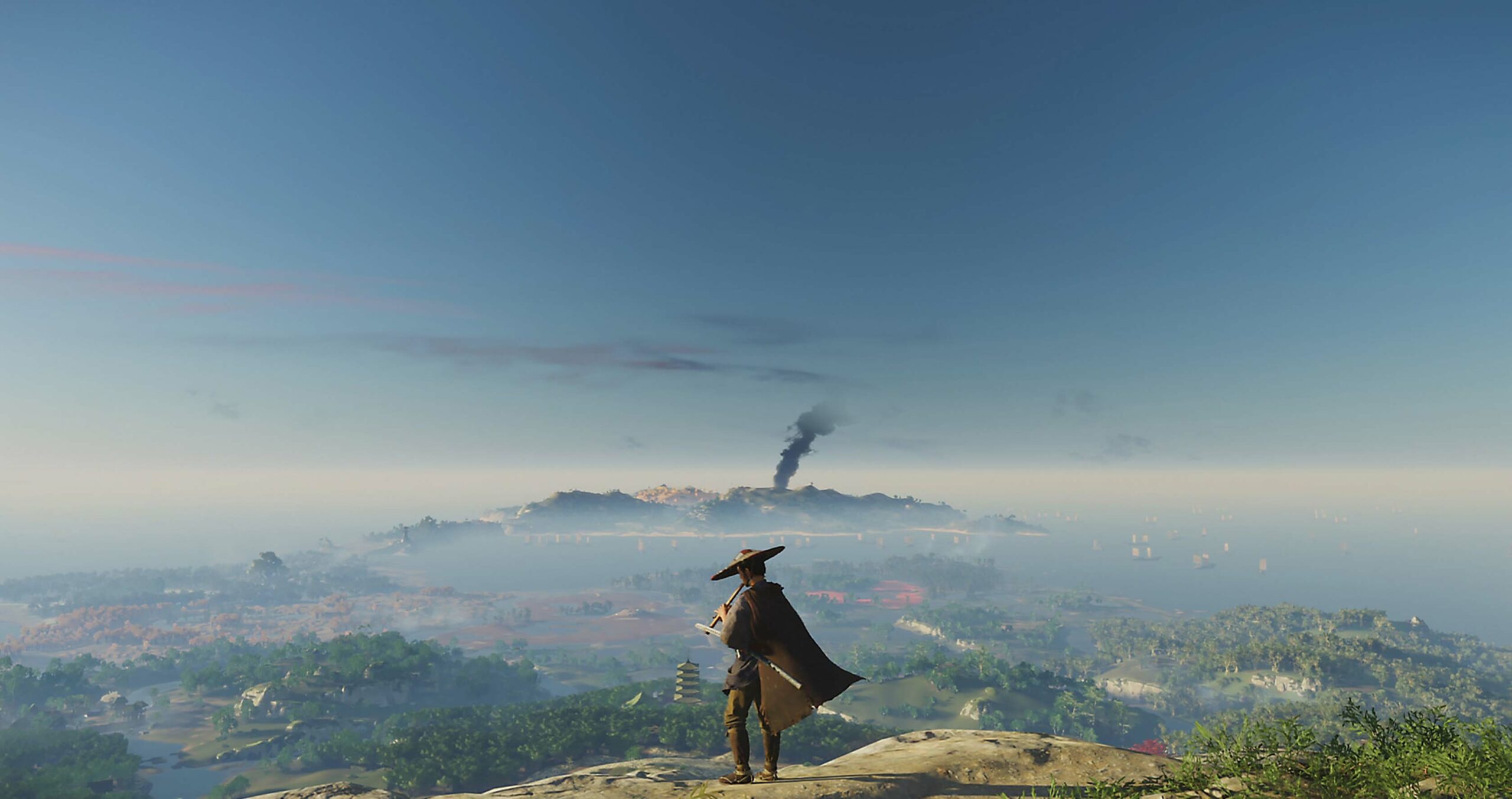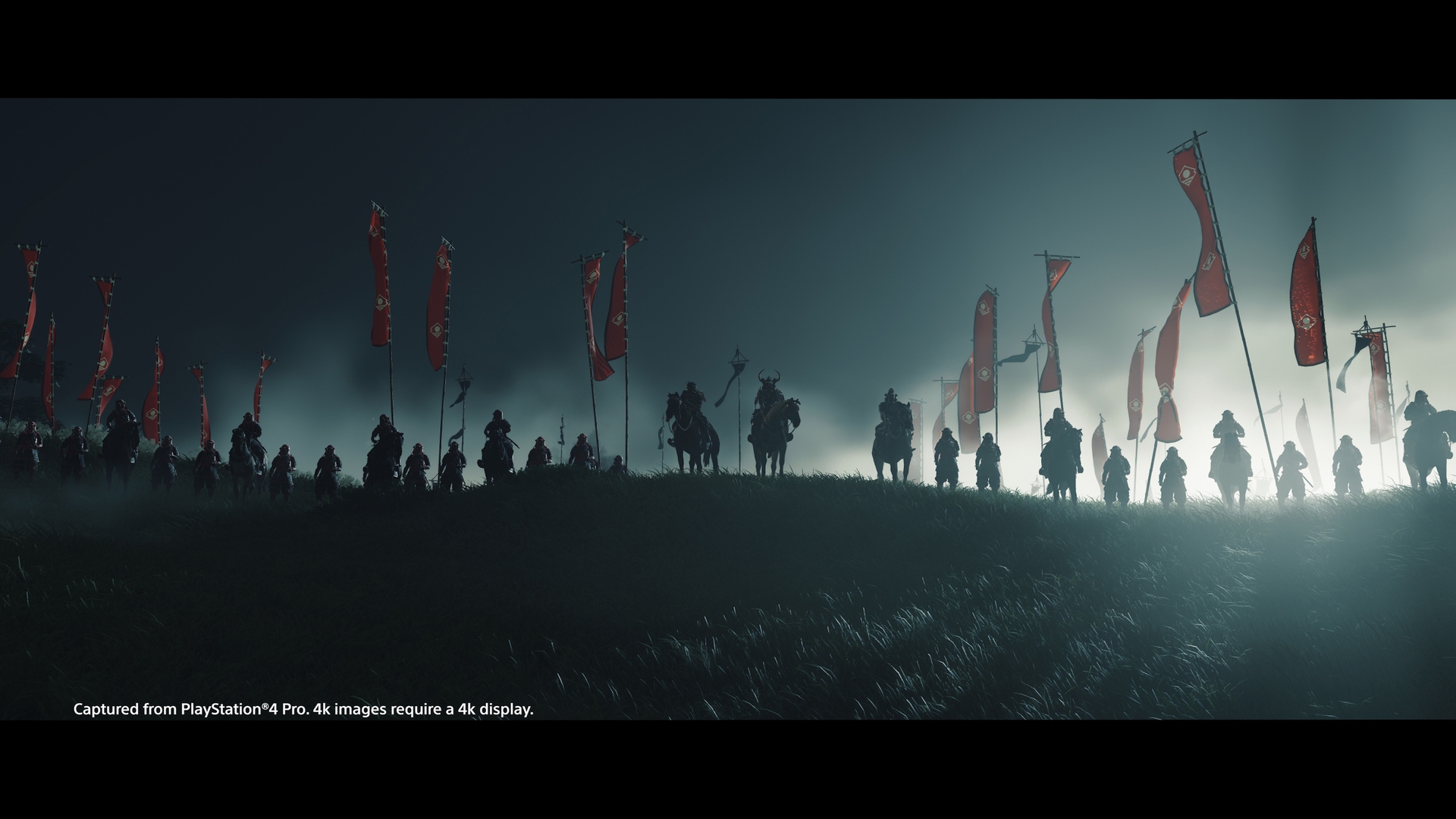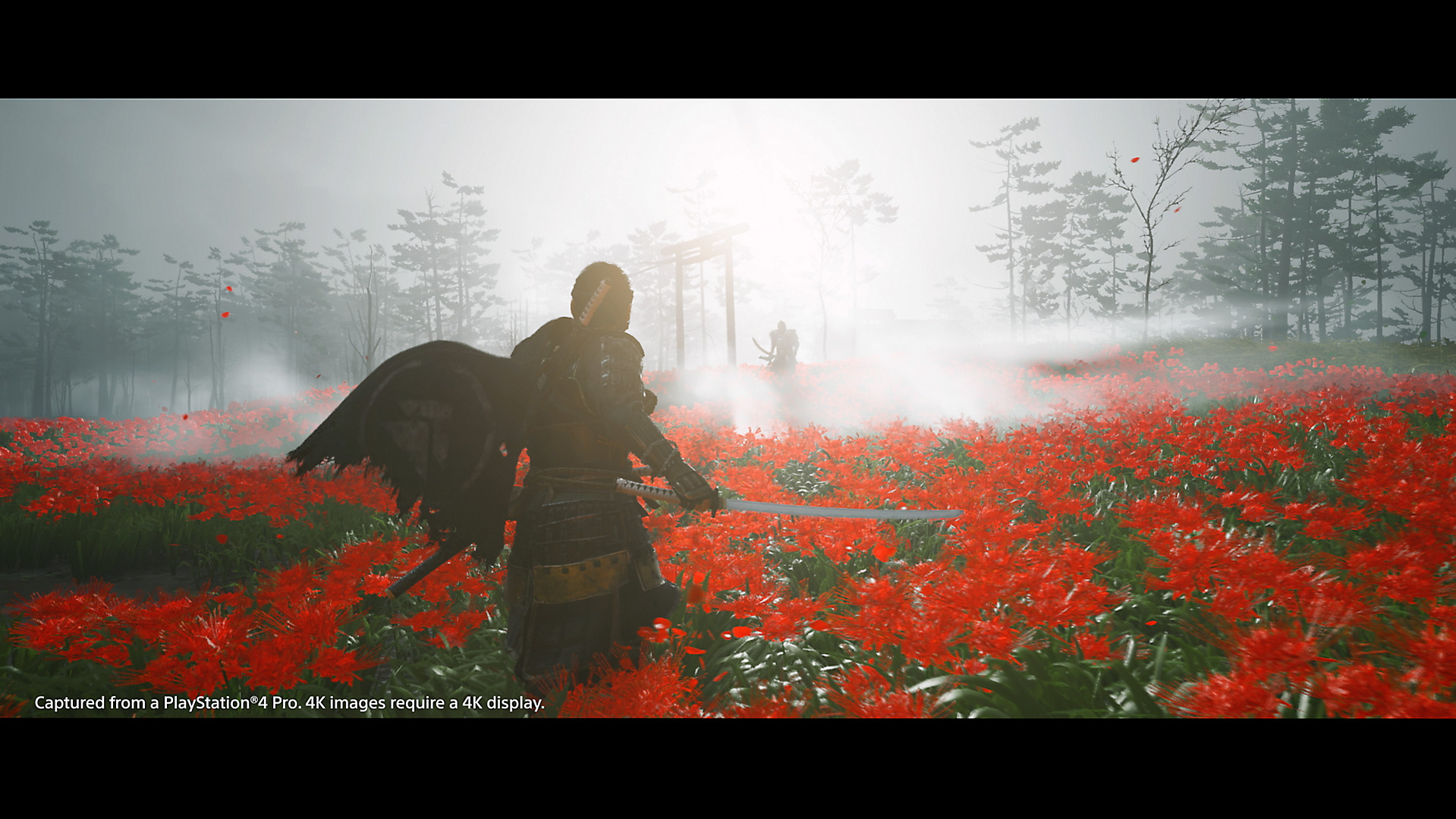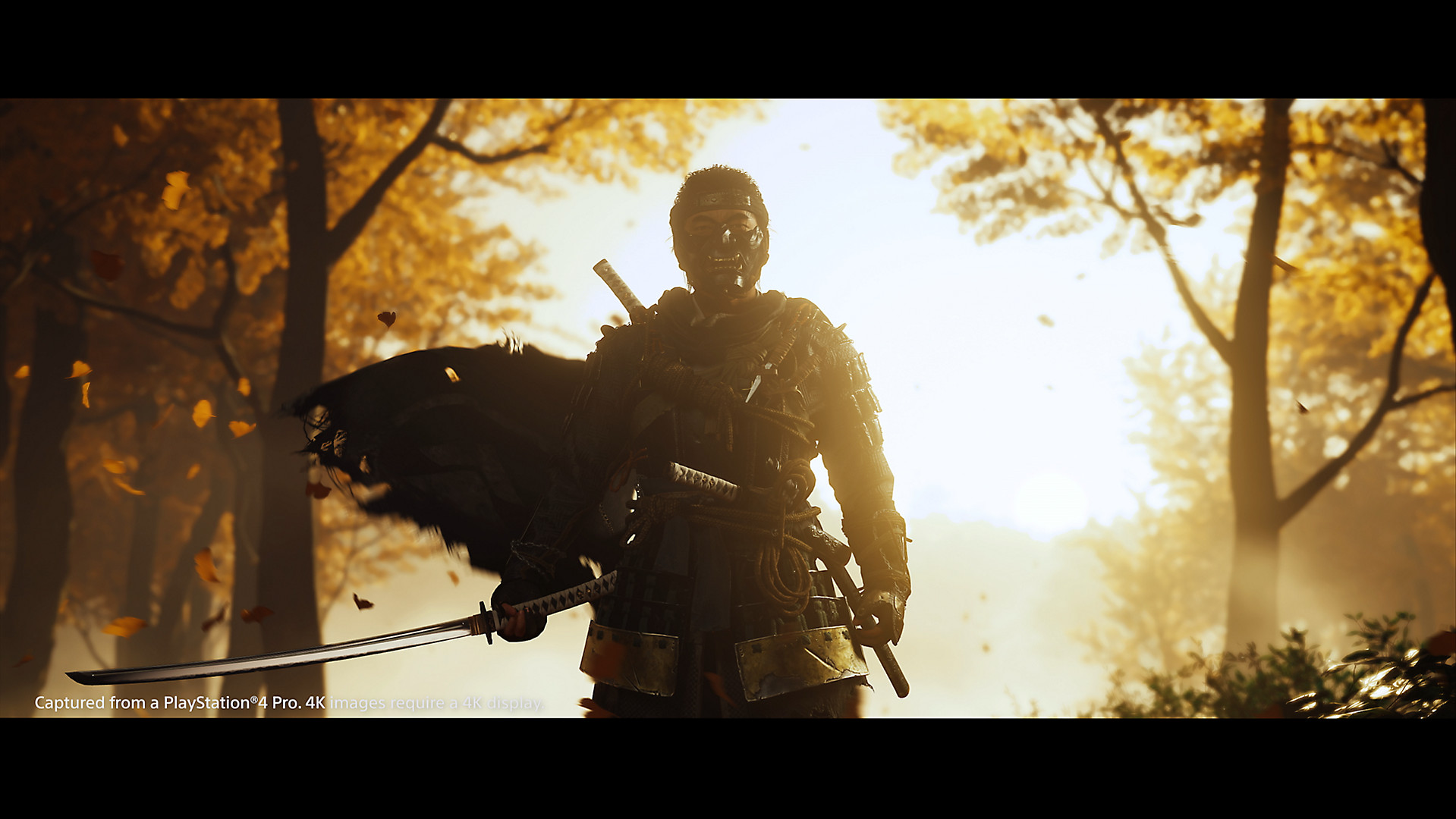
You’d have to imagine that Sucker Productions has been under a great deal of pressure.
After helping usher in the PlayStation 4 with 2014’s inFamous Second Son, the Sony-owned studio is now closing out the generation with Ghost of Tsushima (GoT), which is poised to be the console’s last major first-party title. Moreover, gamers have long been clamouring for an expansive samurai action game in the vein of Assassin’s Creed — a void that GoT very much intends to fill.
Given all of that, it’s safe to say that many have their eyes on Sucker Punch’s latest creation. It’s unfortunate, then, that GoT only somewhat lives up to the hype. Despite its best intentions, the game suffers from significant narrative shortcomings and some frustrating game design. Having said that, GoT boasts overall solid gameplay and one of gaming’s most incredible open-world settings which, ultimately, makes it well worth your time.
A simple war story
Drawing heavy inspiration from legendary filmmaker Akira Kurosawa and the real 13th-century invasion of Tsushima, GoT tells the story of samurai Jin Sakai, the nephew of Shimura, the lord of the titular island. After Mongol forces wipe out most of his allies and kidnap Shimura, it falls on Jin to rescue his uncle and defeat the invaders — no matter the cost.
While not exactly treading new ground, this premise nonetheless provides a lot of storytelling potential. On paper, seeing Jin torn between honouring his code and resorting to unconventional and gruesome means of warfare is an excellent way to stir up some compelling drama.
The problem, however, is that GoT doesn’t dedicate enough time to meaningfully explore Jin’s transformation into the eponymous ‘Ghost” — a vengeful force of nature who strikes fear into the hearts of the Mongols. By and large, you don’t get a full sense of the war’s toll on Jin or even who he really is outside of the samurai armour.
Moreover, Jin’s relationship with his uncle at the heart of the story is woefully underdeveloped. With much of Jin’s journey focused on recruiting the people of Tsushima to help him save Shimura and defeat the Mongols, GoT doesn’t have much time to get you to care about the island’s leader in the first place, outside of some brief flashback scenes. Unfortunately, the Mongols themselves fare even worse. While Sucker Punch has said GoT isn’t a “simple war story,” the game certainly feels that way in many respects, with general Khotun Khan and his army coming off as little more than generic invaders.
The narrative stumbles hit harder when considering that GoT‘s third act is actually fantastic, offering the level of gravitas, nuance and suspense that was sorely lacking up until that point. In the end, the story is by no means poor, but it does feel full of missed opportunities, given its fascinating setting.
Become the Ghost
Thankfully, GoT is much more successful in letting you feel like a samurai. Taking further cues from classic Japanese films, GoT‘s swordplay is very lethal, focusing on timing and deciding when to attack, defend or dodge. Enemies can go down in a few hits, but so can Jin, lending a deadly-yet-thrilling rhythm to battles. Over time, you’ll unlock useful items like kunai, bombs and explosive arrows, which open up the option for more ranged strategies.
Combat is made even more satisfying through the Resolve bar, which fills up as Jin successfully parries or lands attacks. You can spend Resolve to replenish your health. Alternatively, you can unlock special attacks that use Resolve — a smart way to challenge you by making you decide whether to heal or risk trying to land a critical blow.
There are also ways to increase your Resolve before heading into combat. In many cases, you can sneak up behind enemies to assassinate them instantly and replenish Resolve. Items like firecrackers and wind chimes, as well as the ability to climb on roofs, hide in bushes and squeeze underneath small spaces, afford you some choice in how you approach stealth. However, I didn’t use these much, as level design is fairly standard in areas where stealth is possible, while the core mechanics don’t accommodate much experimentation beyond stabbing enemies in the neck.
A much more meaningful and alluring method of gaining Resolve is GoT‘s thrilling risk-reward standoff system. Before engaging with enemies, Jin can normally challenge them to a duel, where you’ll need to see through feints and slash at the right moment. Pull this off and you’ll be rewarded with Resolve and gratifying slow-motion animation, while failing will leave you with a sliver of health.
GoT‘s swordplay does fall short in some areas, though. In place of traditional combos, GoT features Stances that alter Jin’s attacks and give you an advantage over specific enemy types (i.e. Water Stance on a shield user or Stone Stance on a sword user). However, Stances only somewhat change the animation of your heavy attack, which breaks enemies’ guards. Your quick attack is how you’ll typically deal damage, and that doesn’t vary at all by Stance. It would have been nice if more effort went into making the Stances feel more distinct, outside of their ‘rock-paper-scissors’ functionality. Further, because your foes are intrinsically tied to Stances, this means that many enemies you fight will sadly fall into one of a few enemy types. Worst of all, the lack of a lock-on button means that the game frustratingly targets the wrong enemy at times.
For these reasons, combat is easily at its strongest in boss encounters. Without any of the issues tied to generic enemies, these one-on-one duels wonderfully distill the stunning iconography and sweat-dripping tension found in the likes of Kurosawa’s Seven Samurai and Yojimbo. As a nice touch, you can even turn on Japanese audio and a black-and-white ‘Kurosawa Mode’ to accompany Ilan Eshkeri and Shigeru Umebayashi’s rousing score.
A world worth saving
Japan is a country known for beautiful vistas, and Sucker Punch has faithfully recreated that imagery in GoT. Between lush forests, towering mountains, calming riverbanks and frozen hills, GoT features some of the most breathtakingly stunning art direction I’ve ever seen in a game, especially on PS4 Pro.
To keep UI minimal and emphasize exploration, Sucker Punch has cleverly designed some intuitive ways through which you can discover new parts of Tsushima. Essentially, markers that you place on the map only tell you how far away you are from your destination. Instead, you can swipe up on the touchpad to call the Guiding Wind and be steered in the general direction of your marker. Further environmental cues come from foxes who lead you to shrines that expand how many stat-boosting charms you can carry, and yellow birds who fly to other points of interest, such as hot springs that increase Jin’s maximum health. Meanwhile, talk to people you come across in towns, survivor camps or at the mercy of Mongols and you’ll hear of other locations you’ll want to visit.
All of these mechanics help create a deep connection between you and the world that’s less about waypoints and referring to a map and more about rewarding you for going off the beaten path. In many ways, GoT is reminiscent of Nintendo’s The Legend of Zelda: Breath of the Wild by offering that wonderful feeling of something interesting always being around the corner. That said, Tsushima is much more satisfying to explore than Hyrule, as you’re constantly given rewards that meaningfully impact gameplay, such as resources to upgrade Jin’s gear and useful unlockable abilities and weapons.
What’s more, unlike Breath of the Wild, GoT has outstanding sidequests. My favourite of these are ‘Tales of Tsushima,’ which let you learn more about key characters from the main narrative, as well the everyday people you’re fighting to protect. For instance, one standout questline sees Jin struggle to resolve philosophical differences with a former sensei as they track down a former student who’s since joined the Mongols. Another has Jin helping an ally find closure after childhood abuse, showcasing a bit of his empathetic side. The equally enthralling ‘Mythic Tales,’ meanwhile, feature folk tales about legendary sword techniques and gear, told through with gorgeous watercolour cinematics and putting forth intriguing mysteries to solve.
Overall, GoT offers many hours of optional content that are, remarkably, far better than what comes during the main story. This side content goes a long way towards grounding the conflict and showing you the effects of the war from the perspective of everyday people. Not since 2015’s The Witcher 3: Wild Hunt have I seen an open-world game with such well-crafted side content.
Honour restored
Ghost of Tsushima has some noteworthy flaws. Its central narrative is half-baked, its core combat is a bit rough around the edges and stealth is somewhat uninspired.
But above all else, GoT succeeds in letting you feel like a skilled samurai through overall slick swordplay and a sprawling content-rich world that is a joy to explore. What’s more, much of GoT‘s side content ranks among my favourite of any open-world game, ensuring that even after 50 hours in Tsushima, I’m eager to return for more. As far as console swan songs go, that’s a pretty impressive achievement.
Ghost of Tsushima will launch exclusively on the PlayStation 4 on July 17th.
For more on Ghost of Tsushima, check out my interview with creative director Nate Fox.
MobileSyrup may earn a commission from purchases made via our links, which helps fund the journalism we provide free on our website. These links do not influence our editorial content. Support us here.







